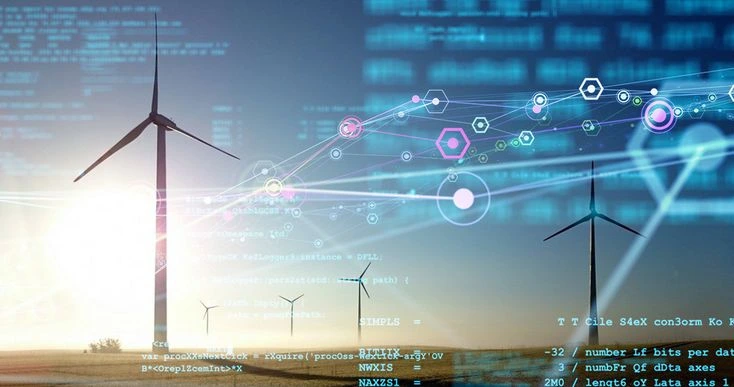Artificial intelligence (AI) continues to drive power demand, positioning natural gas as a key player in the global energy landscape. With data centers operating 24/7 and manufacturing on-shoring increasing, AI technologies are expected to reshape natural gas’s role in power generation. Experts predict that natural gas will fulfill this rising demand, underscoring its importance in a rapidly evolving energy system. AI energy demand in 2025, along with exports, policy changes, and infrastructure advancements, further highlight natural gas as the ‘fuel of the future.
The Role of AI in Driving Energy Demand
Artificial intelligence is driving transformative changes across industries. Its impact on energy demand is particularly significant. AI data centers, essential for powering machine learning models and storing vast amounts of data, require continuous power supply. Bank of America’s global commodities research projects that power demand for data centers will grow 10%-15% annually through 2030. By then, AI data centers alone could consume up to 5% of global power.
To sustain this growth, reliable energy sources are crucial. Energy experts favor natural gas for its efficiency and scalability. This makes it a key enabler of the AI-driven energy revolution. Dennis Kissler, senior vice president at BOK Financial, stated that natural gas supports building and operating the generation plants needed to meet growing power demands.
Natural Gas Market Trends
Despite natural gas prices falling 13% this year due to mild winters and oversupply, the 2025 outlook remains positive. In particular, rising exports and AI-related power demand are expected to push natural gas prices higher. As a result, S&P Global Commodity Insights forecasts that Henry Hub prices will exceed $4.00/MMBtu in 2025, marking a significant increase compared to recent years.
AI Data Centers and Natural Gas Synergy

AI data centers require stable and abundant power. In the U.S., 40%-45% of electricity is currently generated using natural gas. This proportion is expected to rise as AI technologies expand. Scott Strazik, CEO of GE Vernova, emphasized natural gas’s central role in transitioning from coal to cleaner energy worldwide. This shift further cements its importance in powering AI-driven innovations.
Policy and Export Dynamics
Energy policymakers and industry stakeholders anticipate that regulatory changes under the expected administration could boost natural gas’s growth trajectory. Policies easing restrictions on liquified natural gas (LNG) exports and pipeline projects could lower costs and increase profitability. Experts predict U.S. LNG exports will rise by 15% next year as Europe diversifies energy sources amid geopolitical tensions.
Challenges and Long-Term Outlook
While natural gas’s future looks promising, challenges remain. Logistical issues and policy shifts could delay LNG supply projects, which might slow price recovery. Goldman Sachs projects that natural gas prices will hit $4/MMBtu in 2026, slightly later than earlier predictions. However, the synergy between AI’s power needs and natural gas’s scalability positions it as a cornerstone of future energy strategies.
Conclusion
The intersection of artificial intelligence and natural gas is reshaping the global energy landscape. As AI drives unprecedented power demand, natural gas plays a critical role in enabling this transformation. With robust export growth, policy support, and infrastructure advancements, natural gas will power the energy-intensive technologies of the future.
FAQs:
- Why is AI increasing energy demand? AI applications, especially data centers, require continuous power to support machine learning, data storage, and processing. As a result, this constant operation significantly raises energy consumption.
- How does natural gas support AI-driven power demand? Natural gas provides a reliable, scalable, and efficient energy source. Therefore, it is ideal for powering AI data centers that operate 24/7.
- What is the projected growth rate of power demand from AI data centers? Power demand from AI data centers is expected to grow between 10%-15% annually through 2030. Consequently, this growth will further increase overall energy requirements.
- Will natural gas prices rise in 2025? Yes, S&P Global Commodity Insights predicts that natural gas prices will exceed $4.00/MMBtu in 2025 due to increased exports and growing energy demand. Thus, natural gas prices are likely to trend upward.
- How do policy changes impact the natural gas market? Regulatory easing, such as reduced restrictions on LNG exports and pipeline projects, can lower costs and, therefore, enhance market profitability.
- What proportion of U.S. electricity is generated using natural gas? Currently, 40%-45% of U.S. electricity is generated using natural gas. Moreover, this share is expected to grow as demand increases.
- How is natural gas contributing to the global energy transition? Natural gas serves as a bridge fuel, facilitating the shift from coal to cleaner energy sources. Furthermore, it supports the growing power needs of AI and other technologies.
Keep up with our newest articles by following us on https://in.linkedin.com/company/fxisai or visiting our website at https://fxis.ai/.

